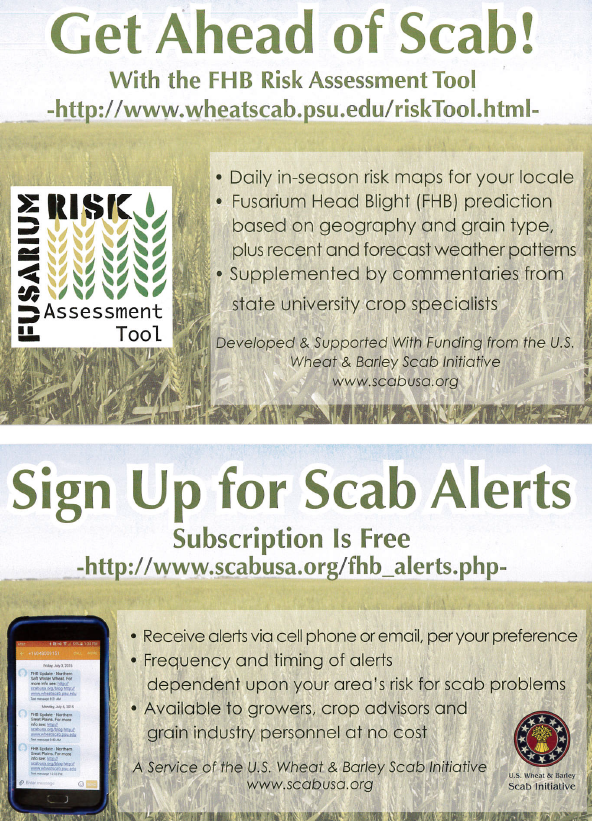By Andrew Kness, Agriculture Extension Educator
University of Maryland Extension, Harford County

As wheat begins to head, growers will be considering fungicide applications for managing head scab/Fusarium head blight (FHB). The Fusarium Risk Assessment Tool (www.wheatscab.psu.edu) is a forecasting model that predicts your risk for developing FHB on your wheat based on the current and predicted weather forecasts. FHB infection is favored by wet weather and high humidity. You should use this tool to help assess your risk for developing FHB as your wheat approaches flowering. Historically, this tool has been about 70% accurate.
Management of FHB should start with seed selection, since fungicides can only achieve about 50% control under the best case scenario; so selecting resistant varieties is crucial for harvesting good quality grain. It should be noted that resistance to FHB in wheat is not complete; therefore, fungicide applications are often needed in order to achieve acceptable management of FHB and suppression of DON vomitoxin. The pathogen that causes FHB can only infect the plant through the flower, so fungicide applications should be targeted between early flowering (Feekes 10.5.1) and 5 days thereafter. Fungicides that are effective on FHB include the triazoles (FRAC group 3 fungicides), which are Caramba (metconazole), Proline (prothioconazole), and Prosaro (prothioconazole + tebuconazole). These fungicides will also do an excellent job on foliar diseases as well, helping to keep the flag leaf clean. Folicur (tebuconazole) is less effective, but provides some suppression of FHB and DON accumulation, but should not be used if FHB risk is high. Over the past few years, Tilt (propiconazole), has become less effective for managing FHB, and is currently providing poor control. Fungicides containing strobilurins (Qoi, FRAC group 11 fungicides and mix-mode of action fungicides) should not be used past flag leaf emergence on wheat because these fungicides can increase DON vomitoxin accumulation in the grain. For barley, fungicide applications should be made at head emergence. Unlike wheat, barley has no resistance to FHB, so if we get a highly favorable year for FHB development, the very best control you can hope to achieve of FHB and DON is about 50% suppression.

